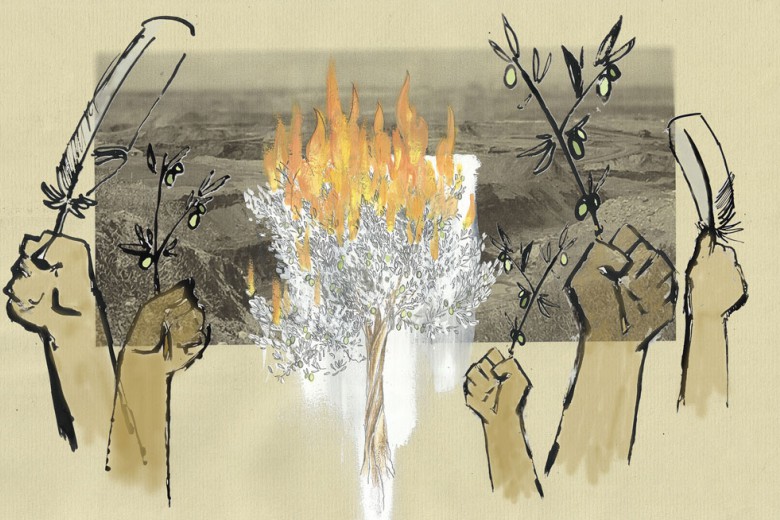Like many other community-based initiatives across Canada, Montreal-based SpaceEx couldn’t afford the cost of implementing their project for social change, which, in their case, involved testing different prototypes for urban food production. So, they turned to crowdfunding. With the platform ioby, they raised over $4,300 to transform a disused urban lot into what is now a collective workspace and grassroots educational hub supported by neighbours and other groups across the city.
Crowdfunding is the process of financing a project initiated through incremental donations from a “crowd” of backers. It’s not new: the patronage model of support for the arts, church donations, and even the practice of Girl Guides selling cookies door-to-door all fit squarely within the parameters of funding from a crowd.
But these days, crowdfunding exists in a difficult context. Against the backdrop of austerity and cuts in public funding for creative and political projects, organizers are turning to online spaces to do their work with the support of their own communities and personal networks.
Media projects, education programs, and access-to-justice clinics are areas of public service that have in the past been publicly funded, but they increasingly rely on crowdfunding to survive.
Crowdfunding can bridge the gap between project needs and project funds, and in moments of social change, it can bypass stubborn, biased, and slow-moving administration of public funding. But it can also compound structural inequalities and let governments off the hook for funding and implementing social programs and services. Crowdfunding is an individualistic approach to public interest work, and it can attach strain, indebtedness, and expectations of unpaid labour to social relationships. It can also distribute the social goods unevenly, favouring those communities that are already wired and have higher incomes.
Given these challenges, how can crowdfunding work to best support social and creative organizing in our communities?
1. What to crowdfund
Although large-scale community projects receive a lot of press, the “typical” civic project is on the scale of a community garden, commonly with a $2,000–$5,000 funding range.
A successful project can boost morale and jump-start momentum, so it is best to be reasonable about financial goals and promised output in order to stack the deck toward success. It may be tempting to dream big, but it is wise to start small and focused.
THE ARC OF CROWDFUNDINGCrowdfunding begins when organizers (“creators”) initiate a project by posting a description to a crowdfunding site (“platform”) and set the financial goal needed to bring the project to fruition. The project is linked to social media platforms and other online sites (say, a website or discussion groups), and often complemented by offline promotion.
The “live” funding period, during which creators collect financial donations from backers, is usually 30-60 days. An essential planning and promotion period precedes the live funding, and the equally important project execution follows.
Rather than funding an extensive community garden, for example, consider crowdfunding in stages and starting with a few allotment plots. Projects that are scalable also appeal to backers: if a farm project aims to plant 100 rows of seed but does not secure the full funding, it might still be able to plant 60 rows. Progress!
Backers like to “see” the results of their contributions, so in addition to choosing the right element to crowdfund, creator communication is a crucial crowdfunding component. Provide updates. Post pictures to your Facebook group. Encourage site visits. Be creative in the ways that people can contribute, both financially and non-financially.
2. Choosing the platform
Currently, there are over 1,200 active crowdfunding platforms. The first on the crowdfunding scene were global platforms Indiegogo (2008) and Kickstarter (2009), but today, an array of platforms occupy the crowdfunding landscape. Choosing the best one for your project is a daunting but important task. Large, global options, such as Indiegogo and Kickstarter, should help your project find an international audience, but their focus and supports might not suit the specific needs of your group or project.
Instead, local platforms with specific community knowledge, partnership possibilities, or relevant media contacts could better position you for success. Interest-specific platforms, which host one subtype of crowdfunding project, are also worth investigating, as they are attuned to the needs of their creators and have tailored features to accommodate them.
It’s also important to consider the support and training that the platforms are willing to provide. While all platforms post online guides and step-by-step instructions to set up your project, some hosts differentiate themselves through more personalized support. Spend time looking at the range of platform options, as well as the details of the projects posted on them – most platforms keep all project details public, regardless of whether they were successfully funded.
The two most common funding structures are “all or nothing” (project must hit the full funding goal or receive no funding) or “keep what you make” (project receives what has been raised by the close of the funding period, even if the goal has not been reached). There are often different fees associated with these funding structures, which you should consider and incorporate into your funding “ask.”
3. Social media matters
Despite the importance of choosing the right crowdfunding platform for your project, the key success factor to crowdfunding is engagement with your “crowd.” This is most often accomplished through social media. Even in the case of projects with significant offline components, I have yet to encounter a successfully funded project that did not prominently employ social media.
BEYOND THE SCREENThe momentum of crowdfunding brings with it a longer tail of impact. A more engaged community is one of the most powerful results of crowdfunding. Community members can transition from online to offline by leading discussions to generate feedback on project specifics, or taking on leadership roles during project execution.
It is also not uncommon for “copycat” projects to appear in adjacent communities, or for creators to launch multiple crowdfunds after one successful project identifies an enthusiastic community.
In many cases, crowdfunding is the first time project creators engage with social media to promote their project. Although most people turn to Facebook and Twitter, this is also an opportunity to get creative.
First, think about where your project may fit best: if your project has visual components, YouTube would be a logical choice, but Vine videos or Instagram, where backers can contribute their own content and connect through tagging, may also prove useful.
Second, know your audience, and go where they are. Across the projects I’ve studied, artists have favoured Facebook, while researchers have clustered on Twitter. Seek out your pockets of support, and communicate with them before, during, and after the funding period.
4. The first third
Before launching a project, creators tend to have a sense of where the first third of their funding will come from: friends and family, offline connections, professional relationships, and existing partnerships. Even if they are unable to contribute financially, these pre-existing contacts can help with project promotion and crowdfunding organizing. Primary networks are critical to the first push of project publicity. Launching a project amid a flurry of activities – such as offline community events and online commenting, liking, and sharing – signals a vibrant project with support behind it.
This community of support is something to nurture through social media, email updates, and offline events. Ideally, crowdfunding will not be distinct from your other efforts – rather, it can fit with, and complement, ongoing work. This community will become your cheerleaders and PR team, and also your volunteers., so think beyond the live funding. Community maintenance warrants a considered, long-term strategy.
5. The workload
I firmly believe in crowdfunding’s potential. Despite this, Kickstarter statistics indicate that over 60 per cent of projects fail to secure full funding. Crowdfunding is extremely work-intensive during the live funding period, and creators are consistently surprised by the amount of time project maintenance requires. Planning matters, as do all the small details of your project, such as responding to comments, thanking every individual backer, and tailoring your project content for different audiences. Make sure you have the time for your crowdfunding project, including the pre-funding logistics, the post-funding communications, and the project’s actual implementation.
FINDING THE RIGHT FITFor a directory of Canadian crowdfunding platforms and portals, look to the Canada Media Fund and the National Crowdfunding Association of Canada.
The U.S.-based civic platform ioby enables not only funding but also volunteer co-ordination on its site.
Even though it’s not available to Canadian users, the U.K.-based Spacehive encourages in-kind donations of goods and services toward community-based projects’ bottom lines. As a civic crowdfunding platform, it can offer examples of effective and successful projects.
6. Recognizing success
Crowdfunding is a great tool for groups or individuals with projects that require funding. In a climate of systemic cuts to cultural grants and funding for political organizing, you can harness crowdfunding to continue your work on the ground. However, be open to framing crowdfunding success in both financial and non-financial terms. Even if you don’t raise the full funding amount, crowdfunding can identify sources of support, solicit feedback, and target new (as well as strengthen existing) communities.







